Experimental: Bell XP-77 – Czech Models 1/48
This article is part of a series:
Given that today is a bit of a drab weather day, I figured it would be a good day to post up a build that was completed a month or two ago. The subject is Ryan's XP-77 fighter prototype, and the kit is another old Czech Models limited-run multimedia boxing. The kit itself is very basic, and I believe one of Czech Model's first. There is some details missing, and much is left up to modelers to interpret fitment. That said, through a labored exercise of patience, the kit's plastic, resin, and vac canopy can be coalesced into a shape unfamiliar to many.
The Bell XP-77 "Tri-4" project was an attempt by the US Army Air Forces to develop a lightweight fighter aircraft using primarily non-strategic materials (wood) during World War II. The project was started in October 1941 by the Bell Aircraft Corporation, and design inspired by the design of the 1930s Thompson Trophy air racers. The XP-77 was supposed to be a small, low-wing monoplane with a bubble canopy, tricycle landing gear, and a single-engine. The planned armament was one 20 mm cannon mounted through the spinner (though not on the prototypes due to available engines) and two 0.5 inch machine guns. What is represented here is what was actually built, and not representative of what Bell designer ultimately wanted to build, which was fair bit more developed.
The project ultimately faced too many challenges and delays, mainly due to the engine and the wooden construction. The XP-77 was powered by a non-supercharged Ranger XV-770-7 engine (a supercharged engine was in the works), which did not deliver the expected performance. The wooden structure also raised concerns about the weight, strength, and durability of the aircraft. Only two prototypes were built and tested, but they proved to be tricky to handle and disappointing in speed and altitude. The second prototype crashed in October 1944, and the project was canceled in December 1944.
I could easily say that the kit itself was as disappointing as the Bell Tri-4 project, however, treating this kit with the appropriate bias toward limited run kits, I'll just say the build was just OK. Fit is so-so, details are ho-hum, but in the end, you get out what you put into it... I added some details, like the open cowl shutters, details to the landing gear legs, and shortened the propeller length (though the chord still looks too wide). The vacuum form canopy was a pain in the neck, and I almost considered posing it open, but decided that would not look right, since the bubble canopy actually rolled back into the fuselage when opened, leaving it looking as if there was only a cowl window. I carefully cut the front and rear sections apart, which in the end helped to mate them to the fuselage better. Despite the tricycle gear, the kit needed no weights, as there is a heavy chunk of resin in the nose that has both the engine face and front landing gear bay molded into it. The cockpit is spartan, as I expect the real thing was, with the main details being a resin instrument panel and seat, which look ok through the canopy.
To paint the aircraft I primed the whole airframe (with doors and gear attached) with Mr Surfacer 1500 black and then over-sprayed with Vallejo White Aluminum to resemble what I'd imagine was a lacquer surface. I then lightly over-sprayed a few shades of aluminum over the cowl, which I assume would be some aluminum panels. I wanted to do this for variation of the aluminum color, mainly, but not sure how accurate this is. X-22 Gloss coat for decals, and then a satin varnish overtop of that to cut the gloss. The decals were matte, stiff and really not great, but that's what the kit provided.
I hope you learned something interesting here, and enjoy the photos.
Just to depict how small this aircraft is, here it is next to a P-51B:
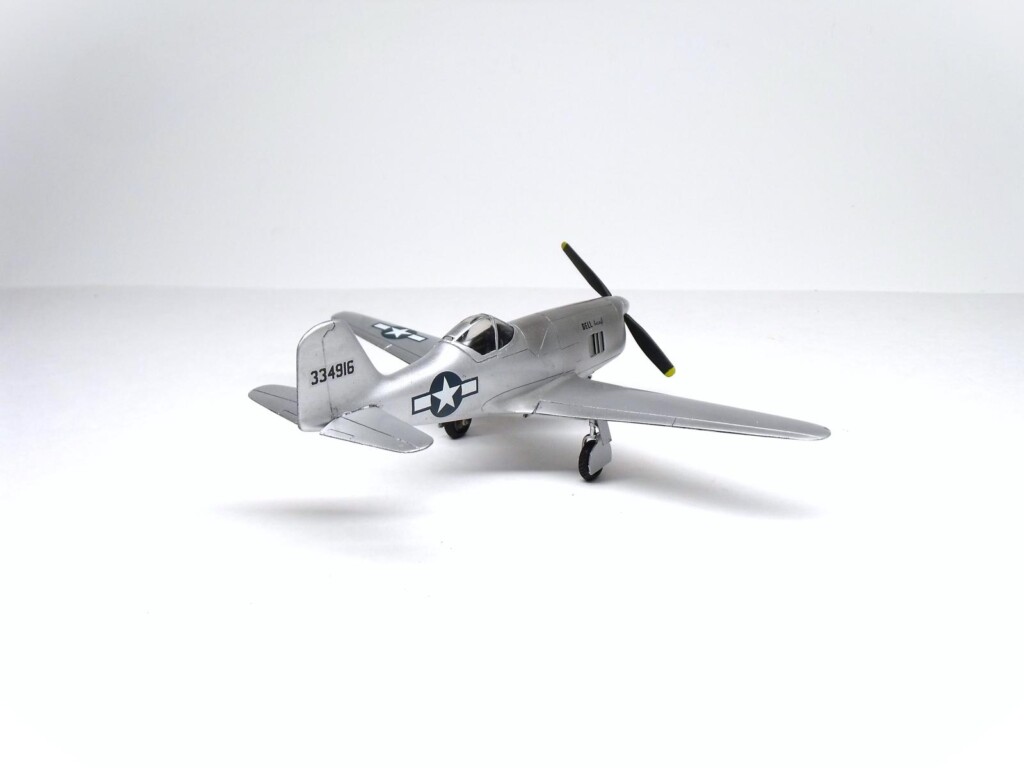
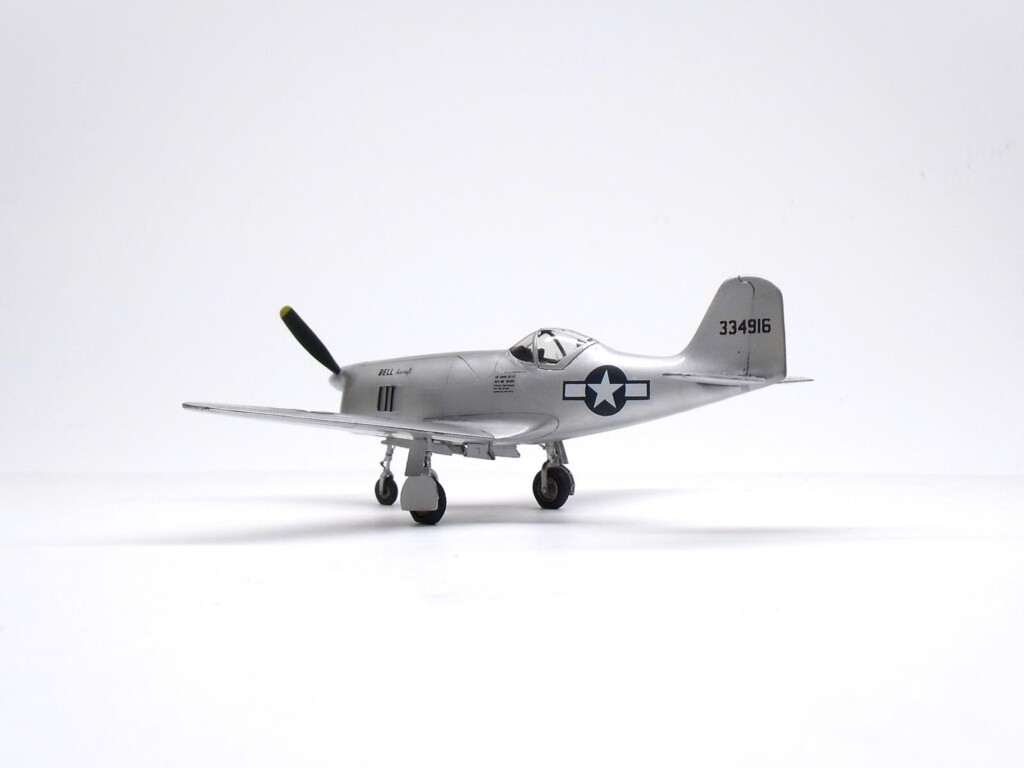

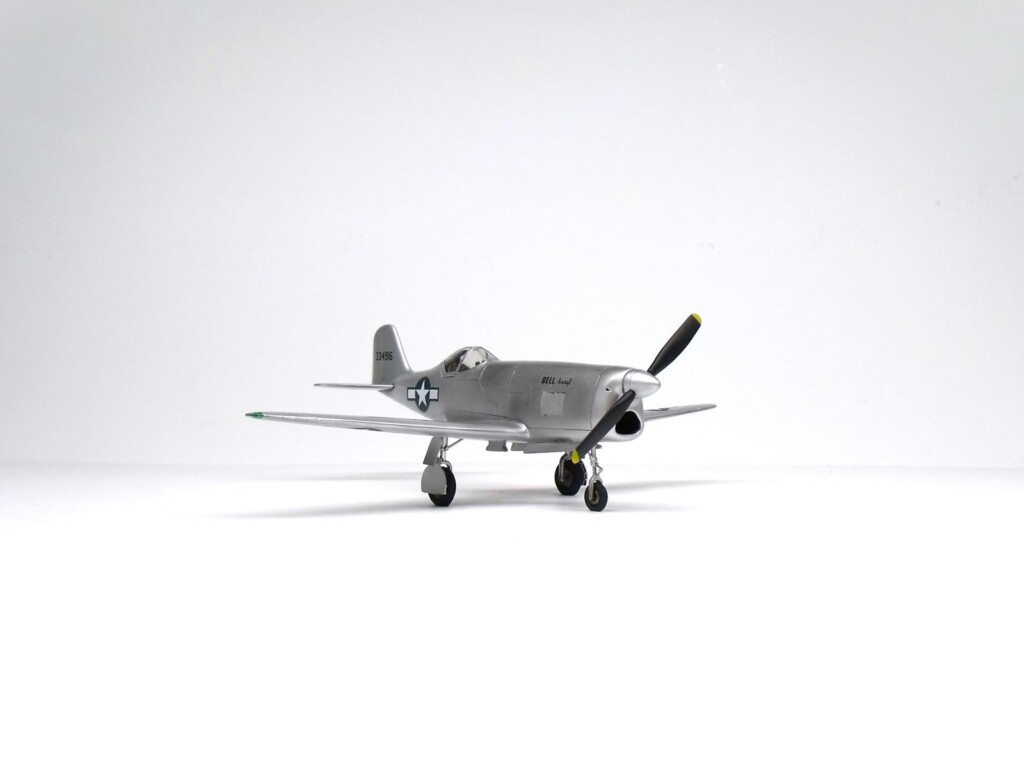
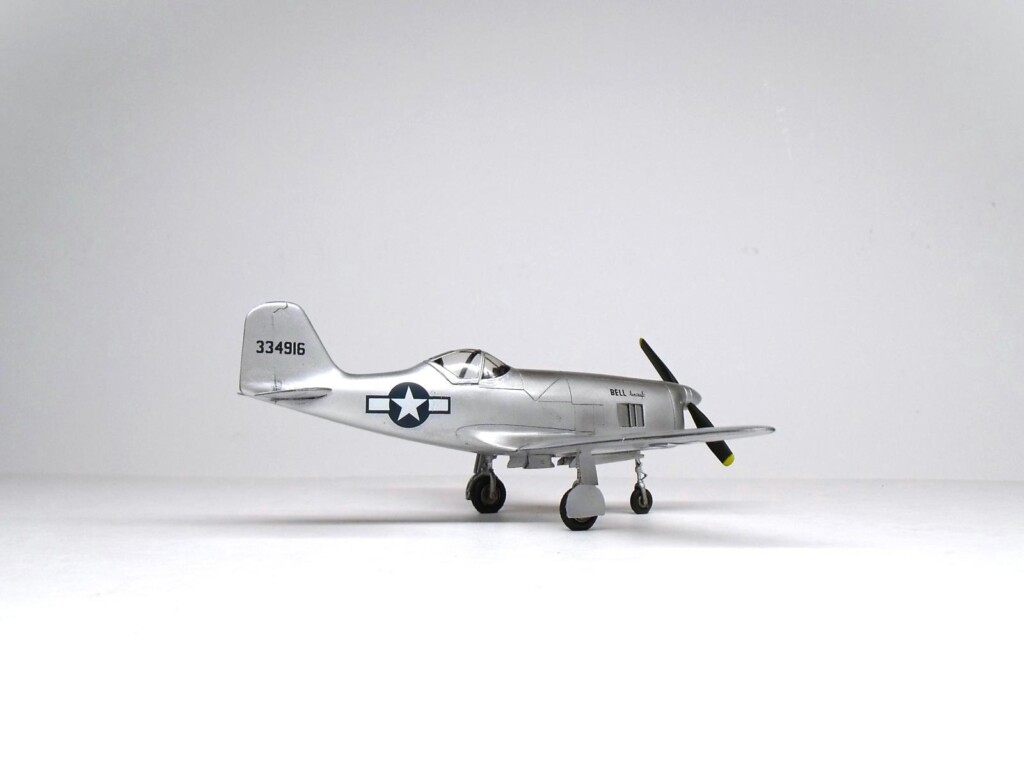
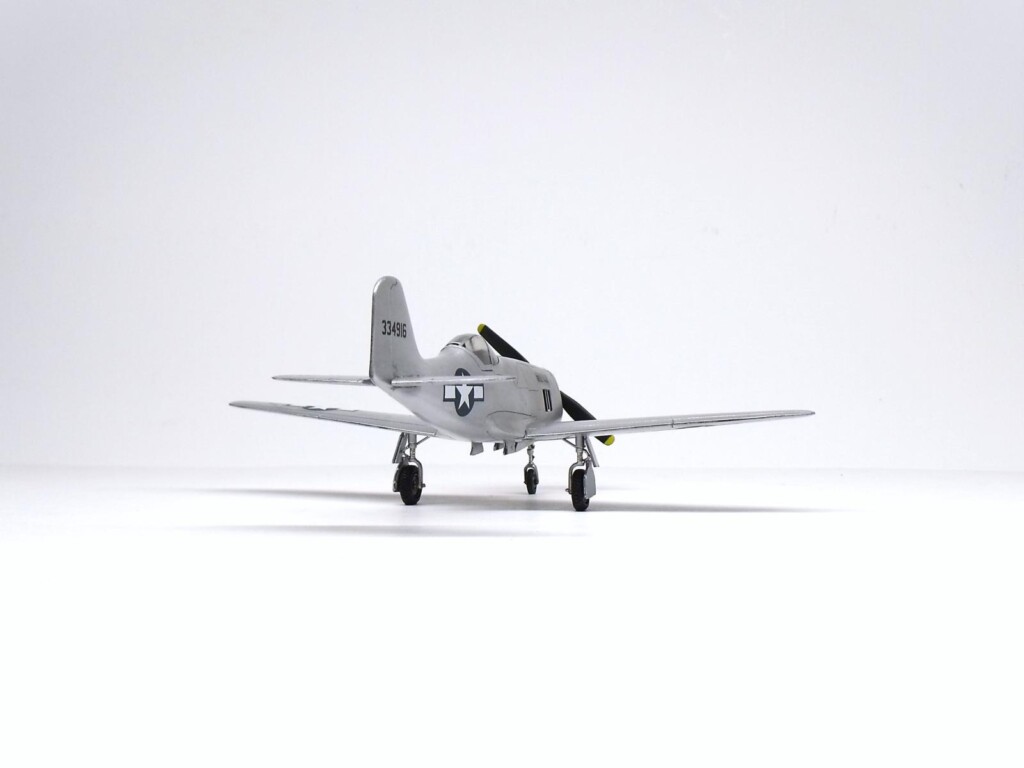
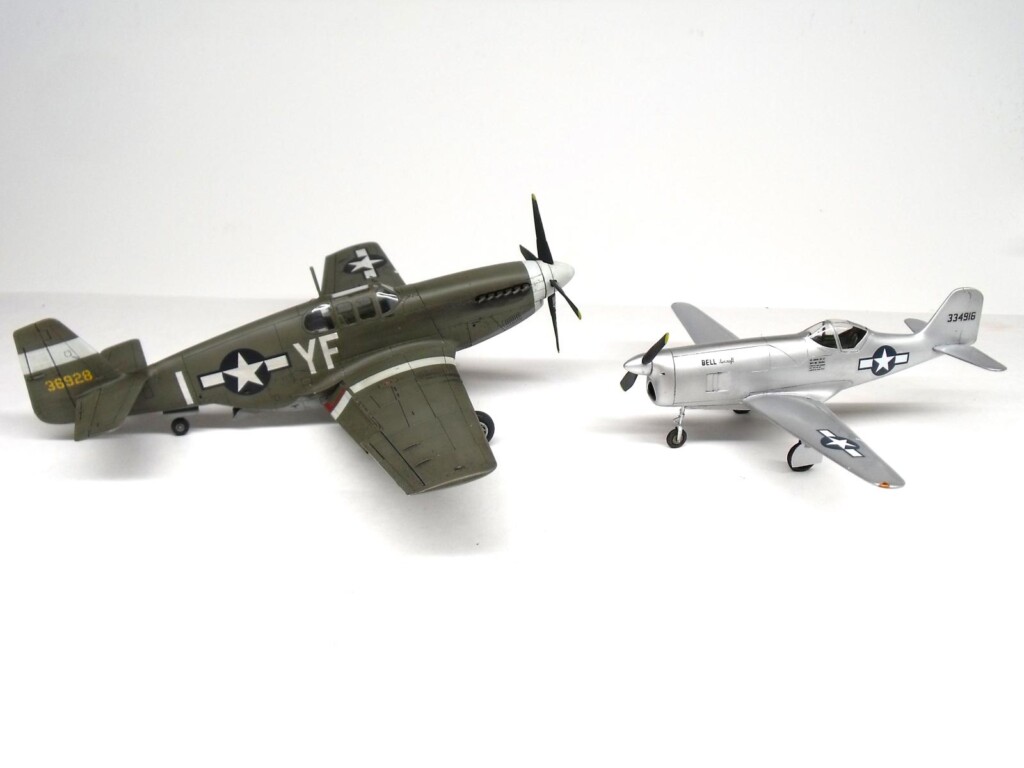
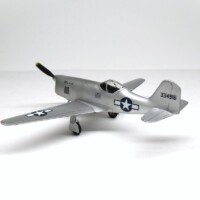
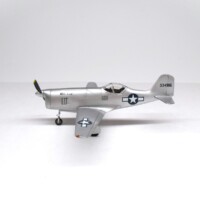

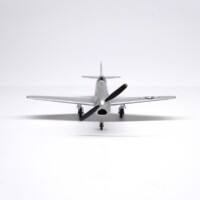
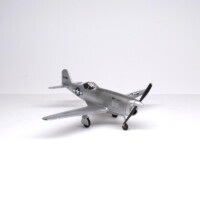
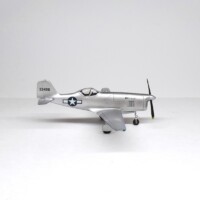
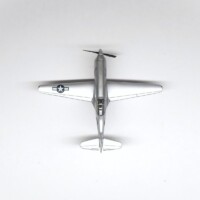
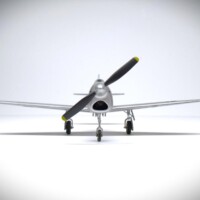
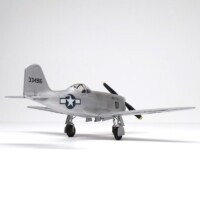

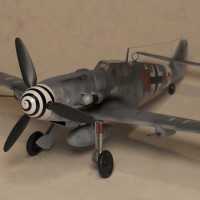
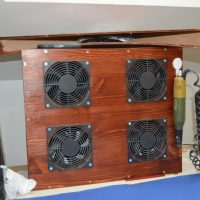
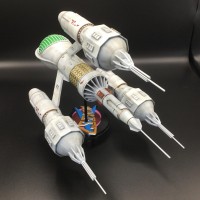
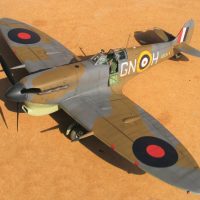
Perseverance pays off. All your criticism of that kit is entirely accurate. But you overcame all of it. Nice work, Andrew.
I hear Modelsvit is going to have their XP-54 and XP-56 next year.
Thanks Tom, I appreciate it. I'm really looking forward to that XP-54, but I am undecided whether I'll try to build up the Czech XP-56 that I got for cheap... Maybe I'll be content enough to not need the Modelsvit one...? HAHA
There’s some very neat work there, Andrew.
Great job and awesome result on this challenging kit, Andrew!
Well done!
Great result, Andrew @pb_legend
Was not aware of this aircraft but its history is very interesting.
Thanks @johnb, its very interesting exercise to speculate of what might have become of this concept, had it furthered development.
Well done, Andrew.
For what they are, Czech Models are fun to build and you did a mighty good job on this one, Andrew @pb_legend. The XP-56 is worth tackling. Use some brass tubing for the exhausts and be careful of the wobbly tricycle nose gear and go for it.
@eb801, thanks for the vote of confidence, Eric. I pulled the kit out to have a look last night, and it looks like a pretty straight forward build. Perhaps sooner than later!
Very interesting build. I'm amazed at how small it was compared to the Mustang! Nice work on a not-so-easy kit!
Greg, thanks! @gkittinger, it seems that in spite of the bubble canopy, it would have still have been extremely cramped. Looking up photos with pilots, they look hunched over and uncomfortable... nothing like the Cadillac of the Skies!